Rampant disease in my garden?
Following up on my excellent soil test results of a couple weeks ago, I am now pretty sure I have a bad infection with Fusarium or something that has caused wilting/dead plants and poor growth and production over the last few years.
This spring we've lost a bunch of rhubarb and a 15-yr old Concord grape that was always vigorous.
I posted over in the Garden Clinic if anyone has any ideas to share.
Here is a link that might be useful: My Garden is a Death Trap for Plants!
Comments (29)
coconut_head
11 years agoOuch! That sucks brother. I have no real great advice, but if it was me, aside from solarizing, I would also try taking a propane torch to a bed or to to see if You could fry the pathogens in the soil, if that is your suspicion. I think it would be both faster and more effective than solarising.
Best of luck
Laurel Zito
11 years agoI think using the free city wide mulch is a mistake, even if it is free, you still have to work it in. There was a woman quite some time ago who mulched with some free wood and got some kind of disease that killed her whole garden.
My ideas would include get a steam shovel and remove all the soil, as much as you can. Start over again with good clean soil that you paid for and know what is in there. Amend with only compost you make and only bagged browns that you know what is in there. Never put anything in that you don't know what is in there. Or you could move.
It may take years to clean it out naturally. People do put weed killers and then put them weeds in the city wide compost. Other types of chemicals could be in there, like soil from near meth lab or used motor oil, anything at all be it pesticides or other toxins like anti freeze. Some chemicals may not go away for over 100 years.
Related Professionals
Reading Landscape Architects & Landscape Designers · Kapaa Landscape Architects & Landscape Designers · Oatfield Landscape Architects & Landscape Designers · Saint Charles Landscape Architects & Landscape Designers · Wilmington Landscape Contractors · Bowie Landscape Contractors · Cliffside Park Landscape Contractors · Fort Hunt Landscape Contractors · Fort Payne Landscape Contractors · Overland Park Landscape Contractors · Palos Verdes Estates Landscape Contractors · Woodland Landscape Contractors · Norridge Landscape Contractors · Bellevue Decks, Patios & Outdoor Enclosures · Reading Decks, Patios & Outdoor Enclosurespnbrown
11 years agoFirst you'll have to track down and restore a steam-shovel, which will be an extensive though interesting project in of itself.
calypsobloomer
11 years agopnbrown LOL! ^ Ok Im not sure were you live but for me it rained a ton this year. This means water logged soils and a build up of anaerobic bacteria and fungus underground. these are the organisms that cause sticking rotten smells and cause plant rot and all kinds of other underground nastiness. My guess is that you are facing off with these anaerobic organisms and my best tip would be to combat these organisms with an arsenal of organic compost tea. I described this process earlier in another post but for the sake of your plants Ill repost my explanation. I just got into making compost tea again and I have read and watched many a youtube video thus far about preparation of the tea. There are 2 things that manifest the organic properties of compost tea, bacteria, and fungus. There are many different recipes which begin by establishing the nutrient content, N, P, and K and of course you may add other vitamins and minerals to the mixture. Next you focus on the feeding process. An airstone is added to a compost tea setup to create an aerobic environment, organisms that breathe oxygen. If you add molasses or another type of sugar you are going to have a bacteria rich environment. Bacteria in the soil eat other pathogens and promote a stronger immune system in the plant. Adding wood or sawdust to compost tea creates a fungus rich tea, AKA mycorrhizae, which establish a symbiotic relationship with various plant root systems which enables a larger vascular structure within plant roots thus increasing nutrient uptake and water retention. Think of mycorrhizae as a living spiderweb or mesh that grows within a plants root structure which acts as a sponge that absorbs water captures nutrients, and devours anaerobic organisms, organisms that dont need oxygen. Anaerobic metabolism is the breakdown of cellular structures due to a lack of an oxygen environment. It is the reason that soggy plants get root rot and it consists of bad bacteria and fungus. The point of growing organic is to not only keep the food clean and healthy but to also establish an environment that is hostile to anaerobic conditions thus creating a thriving prolific garden. Mycorrhizae is a good anaerobic fungus found in the roots, remember you need good bacteria too. By adding aerobic bacteria to your soil you will win the war against your attacking fungus.
calypsobloomer
11 years agoAlso, You can build a compost tea brewer found about 20 bucks. Everything you need is at wallmart. You need an airstone pump from the aquarum section, 2 airstones, plastic airstoen hose, a hose splitter, and a 5 gallon paint bucket. that comes out to right under 20 bucks were i live. You can focus on getting a good balance of nutrients to make a good fertilizer but honestly I would concentrate on building a good bacteria and fungus rich compost brew. The best route is to get a hold of some good compost like some grass clippings and put about 5 cups into an old stocking. and brew a very small amount using sawdust and molasses as food. this link will help you understand and setup the brew very well. http://www.earthactionmentor.org/articles/compostteayou take my advice and brew the tea remember that in 24-48 hours it should smell sweet and earthy and have a nice froth on the top. If it stinks and smells bad it is not getting enough oxygen and you need use less compost because, 2 airstones should be plenty. Now go kick some anaerobic ass.
calypsobloomer
11 years agoOne more thing i forgot about. You can use a mixture of 3-8% hydrogen peroxide with water I use 40% peroxide 60% water, to kill all of the organisms in the soil. This allows you to flush the soil prior to introducing the new aerobic organisms from the compost tea. The hydrogen peroxide breaks down into oxygen underground and will leave no toxic residues in your soil. The hydrogen peroxide will oxygenate your roots and create a hostile environment for the anaerobic fusarium and it will prepare the soil for your new aerobic compost tea. I would use the peroxide mixture several days before applying the tea. Remember to let the soil dry completely of peroxide, which take about an hour, before using the compost tea. After the tea is ready you do not use the peroxide mixture anymore. I guarantee this will fix your problem.
toxcrusadr
Original Author11 years agoThe steam shovel thing cracked me up too...I might have fun restoring one, matter of fact. In my case a Bobcat would do it, but either way that's one alternative. Frankly I'm reluctant to give up this fabulous soil I've built and would rather fight for it.
Buying soil can be a crapshoot though. Folks around here are likely to sell you heavy clay, or if it's bottomland silt, it might be full of bindweed. But there are dealers of 'good' soil/compost mixes if it comes to that.
Calypso: Compost tea or other methods to encourage beneficials like fungal microrrhyzae may be beneficial if what I have will respond to that. I definitely do not have a soggy anaerobic soil. In fact these beds drain quite well, and the wilt and other symptoms are present year after year with increasing frequency regardless of weather.
TT, our city mulch may be a cesspool of disease, but the crews are pretty good about keeping toxic stuff out, even treated wood scraps. Now and then they test the mulch for toxics. I'm not worried about that. I haven't used much of it near the garden anyway, and none actually *in* the garden.
I think I spread this around myself by composting all my plant wastes and putting most of the resulting compost in the garden. We really don't see these symptoms elsewhere in the yard.
Solarizing has been suggested by more than one source and I may have to go that route first and give up a season of gardening. I don't think heat treatment or peroxide is going to be feasible here. Even just to a depth of 6", we're talking several tons of soil here.
Laurel Zito
11 years agowhat I meant to say, it is so much work to dig up all that soil. Maybe an earth mover? What do they call those things now a days? Mike Mulligan and His Steam Shovel is a classic children's book. I was thinking of that.
Here is a link that might be useful: Mike Mulligan and His Steam Shovel
Lloyd
11 years agoHave you tilled your soil lately Tox? I'm thinking with a high OM content you may be suffocating the plants.
Lloyd
david52 Zone 6
11 years agoI've been pondering this for a couple days. Is it possible for you to let the soil dry out more between waterings? Almost to the point the plants are stressed? Or do you have too much rain? That seems to eliminate a whole lot of problems where I garden.
As for 'cleansing' or whacking back the over-all soil fungi and bacteria count.
When I get a powdery mildew-like thing on my lawn, I'll take one of those hose sprayer things and fill it with Dr. Bronner's peppermint soap, then hose down the whole area. Works ok.
And your yard smells nice :-)
Laurel Zito
11 years agoDr. Bronners is great. It's a wetting agent. But, I think this problem is too serious for minor cures. I won't not eat anything from soil from a city wide compost give away. I wonder if that is why they stopped giving it away? So many people had problems. They thought if someone died from eating veggies grown in toxic city wide compost, the govt would be sued. So now I understand they give it to farms, and the farms don't tell you that what you buy may be labeled organic, but it could be grown in this stuff. You can't trust everyone to do the right thing and only compost things that are not harmful. I once tired to find out where they take this stuff now and I could not even find out. I kept hitting dead ends.
Laurel Zito
11 years agoDisclaimer
If you are sensitive don't read this about cats.Around 1995 some awful person was poisoning stray cats in my neighborhood. I found three dead cats without injuries. I know this is the kind of thing people would just put in the city wide compost. Then what ever it was that killed them rat poison or even Toxoplasmosis. Then they give it people for their gardens and they start to grow plants and eat the plants and then..... I just can't warn people enough about the dangers of city wide compost. People think cats are organic,and that it's like putting a thanksgiving turkey in there. They just have no idea. Too much coffee sorry.
One of our older cats died and we did not find her. Then weeks later a neighbor confessed that were not home when she rang our doorbell so she put in the city compost. They should call for dead animal pick up, but some people don't know the number of the dead animal pick up line, and it's easier just to toss it.
toxcrusadr
Original Author11 years agoLloyd: We don't till much because of the clay. But, I do turn over most beds with a shovel every year or two. The organic matter is what it is because of digging in compost when planting, and compostable mulches used during summer. If you dig up a clod of it when it's dry, it's full of wormholes. The beds sit 4-6" above the lawn so they do drain and aerate. Soil smells OK. I don't have the feeling plants are suffocating but I'm open to anything.
david52: I think I dodn't water enough! We get cracks in the clay in the hot summer.
TT: I do remember Mike Mulligan. They call it a backhoe nowadays. :-]
Our city mulch sites where the mulch comes from are yard waste dropoffs and I've never seen dead animals there. Besides they are fully compostable anyway. :-] One critter worth of poison is insignificant in a house-sized pile of mulch. Or compost. Our city *compost* is made from curbside yard waste, there could be other stuff in the bags but in any case it is hot composted, the product tests out very well on NPK, pH and micronutrients, and I've used a couple of loads. Minor compared to other sources in my garden though.
I don't think my symptoms are related to nitrogen tie-up. A full grown basil plant would not suddenly wilt one branch at a time until dead from lack of nitrogen. An old established grape vine would not suddenly die in the spring - we don't even use compost around the grape vine.
david52 Zone 6
11 years agoFor the grape vine, I'd suspect something small and furry and busy during the wintertime, like voles. I lost three more vines this year - there's no sign of the little fellas except the snow clears in the spring, I see the trails - often just darker trails in the grass from the nitrogen in their urine. They also killed a couple dozen salvia plants I put in last summer.
For this wilting basil stuff, one branch at a time, thats just bizarre.
I dunno - at some point, I just go for the best garden practices i know - keep mulch thick enough so there isn't any spray back, keep even soil temps and moisture, and hope for the best. But I suspect you do that anyway.
elisa_z5
11 years agoWell, this is the number one garden web mystery, no?
So sorry this is happening to your garden.
I have only one idea to offer, and that is to try planting the same thing in several different places to see how it does and see if that helps with diagnosis -- for example, buy a six pack of tomatoes and plant a couple in your beds, a couple in pots (sounds like you already did that?) and a couple right smack in the middle of the front lawn if that is away from any of the mulches you have added. You could even plant one or two right in the mulches, next to your perennials. That might help you rule out things like sunlight, herbicide drift, city compost, etc.If you solarize (and as I understand it, it does not kill all the beneficials -- they just migrate lower and cooler and come back to the root zone when the plastic comes off) you can still have a fall garden of spinach, lettuce, arugula, tatsoi, etc.. The most effective solarization will happen NOW (quick! the longest day is coming!) and by August you can plant your fall crops.
At any rate, would you please let us know how it all goes?
Wishing you good sleuthing and good growing.
toxcrusadr
Original Author11 years agoI shot some pics and will get those up as soon as I can.
david52: Interesting thought on the voles. We have some
moles and voles that use their tunnels. I'll check around the grape vine.I've had other plants wilt one branch at a time. The vine crops would do that, but I thought it was probably vine borers getting into one vine at a time. Right now, though, I have a big yellow (gray-headed) coneflower cluster, 3 ft. tall, with a couple of wilted stems. The other stems look fine. Classic symptoms. It's 125 ft. away from the veg garden but has had city mulch on it.
Thanks for the suggestions, I welcome more discussion and I'll definitely keep this thread updated.
toxcrusadr
Original Author6 years agoFound my old thread and I'm still having weird problems in the garden. I'm convinced I have a disease or three.
I have several 4x10 6" raised vegetable beds with silty clay amended with compost for many years. I rotate crops. This year the pepper bed has a couple of very sick peppers. Here are a pair of healthy bell peppers (Keystone and Red Beauty) at one end of the bed.

It was hot and dry when I took this photo so the leaves are a tad curly but the plants are big and have tons of peppers on them.
8 ft. away is another pair of the same peppers from the same two 4-packs.

Half the size or less, yellow blotchy wilted leaves, no fruit.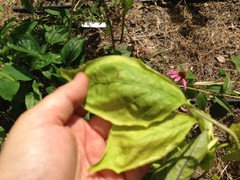
Now last year I had all the peppers in a different bed and most of them did this. Just very sickly and low yield. This year that bed got radishes early and they did very little. I planted green beans which grew huge and green produced a few beans and then the leaves began to turn yellow and production stopped in late July. I pulled them all out a couple weeks ago. I haven't grown beans much so I'm not sure if htey should grow till frost or what but these gave up pretty quick considering how good they looked. I'm wondering if that entire bed is ill. I had two basils next to the beans and they along with 4 other large healthy ones in the next bed over wilted and died within the last couple of weeks.That bed is vacant now so I was thinking of solarizing it for the next couple weeks. It's not super hot out but what do I have to lose? Nothing will grow in it.
toxcrusadr
Original Author6 years agolast modified: 6 years agoLooking around the webbernet, it seems the peppers could be affected by bacterial wilt (pseudomonas), Fusarium or Verticillium (both fungi). I have seen several pics that suggest Fusarium is the most likely. They have that exact stunted wilty yellow look.
http://rachel.golearn.us/modules/en-infonet/export/res/files/1661.400x400.jpeg
I did see a bacterial wilt pic that also looks just like mine.
https://www.gardeningknowhow.com/edible/vegetables/pepper/pepper-wilt-on-plants.htm
Still need to look at how these would affect beans and basil.
These diseases might respond to solarization though. Most of the suggestions - high phosphorus fertilizer and more watering for example - don't seem to be my problem. I have high P, very healthy soil (nutrient and organic matter wise), and it has rained well this summer.
toxcrusadr
Original Author6 years agolast modified: 6 years agoApparently basil has been under attack by 'basil Fusarium' for a few years, as well as a downy mildew that looks similar. My leaves got large brown splotches then the leaves just died and fell off, leaving dead skeletons in a matter of 2-3 weeks.
The cure seems to be avoiding buying basil plants, grow from certified seed of resistant varieties ('Nufar') and long rotations. Or just grow them in pots not in the ground. I could do that.
toxcrusadr
Original Author6 years agoYellowing green beans can be caused by Fusarium too.
https://www.ag.ndsu.edu/publications/crops/dry-edible-bean-disease-diagnostic-series#section-8
Probably should have posted all this in Vegetable Gardening. ;-)
toxcrusadr
Original Author6 years agoI think I'm going to nuke this bed - one site suggested covering with leaves and straw and setting FIRE to it. I like it! Maybe just before solarization. If I can find anything dry to burn after the rains.
It's been a relatively cool summer so hard to say at this late date whether solarizing will help. But next year I'll rotate something completely different from any of these crops. Maybe the sweet potatoes - they seem immune to everything around here.
rgreen48
6 years agoI agree that the veggie forum might offer you some good practical advice, but out of curiosity, what's your rotation schedule, and does it include all solanaceae crops?
toxcrusadr
Original Author6 years agolast modified: 6 years agoI normally put all the tomatoes in one bed, and all the peppers in another, and the third one may have a miscellaneous mixture - a zucchini or two, melon, cuke, eggplant, basil. Actually I grow little if any cucurbits anymore as they are immediately murdered by multiple pests and diseases. Basil sometimes gets between the tomatoes and is sometimes elsewhere. I was not really aware peppers and tomatoes were in the same family - shows what I know!
In fall I usually plant some hardy greens (kale, turnip, mustard) in a vacant spot to grow till frost then drop my cold frame over them to grow through the winter. Early spring I plant a block of lettuce somewhere and move the cold frame over that spot until the lettuce can make it on its own.
So almost anything can grow nearly anywhere on a year to year basis except for the maters and peppers which are always in their own beds and never in the same bed two years in a row. But it's very likely for tomatoes to follow peppers or vice versa.
rgreen48
6 years agolast modified: 6 years agoYeah... that's the limitations of rotation in a small garden. A disease can carry over in a crop of the same family as peppers and really not affect that second crop in the same way. Most sources say to allow 4 years before another crop of the same family is grown in the space. That's really tough to do in a small garden. The choices come down to first... getting a definitive cause for the problem; and then, if it is a soil disease, wait 4 years before growing, in this case solanaceae, again. Of course, you could change the soil, but that is another thing entirely.
toxcrusadr
Original Author6 years agoI actually have more than 3 beds. On the other side of the yard where the original garden is, there are a couple more that are still viable. It was getting shady and full of tree roots over there so I moved two beds several years back and added a third to make the 3 I've been talking about. Then we removed a big tree by the old garden. The remaining 2 beds now get better sun and I have sweet potatoes in one and okra + tomatoes in the other and they're doing well. Tomato blight is almost nonexistent over there which is unusual. So maybe I'll include those two in the rotation schedule, keep some records of what goes where, and try to increase the time between plants of the same family. Already made a chart of what grew where this year and last year.
I raked off and leveled the worst offending bed last night and put down some plastic to try and solarize. It rained the day before so it's good and damp. Only problem is the temps are going to be 79-83F for the next 10 days, then we're into Sept. already. Where did the summer go?
BTW the basil stems were clearly brown at the base and it was crawling upwards into the green. I never paid attention to that, I bet it was happening for years.
The garden should be in major production stage in July - Aug but it's half dead. I've come to expect this every year, a promising spring, lush growth and then decline. I always thought it was the weather or something else...now I realize, probably not.
If the garden produced the way it should, I could afford to fallow a bed every year and either put a cover crop on or solarize, if it helped.
rgreen48
6 years agoI have 13 beds now, and with the fairly large variety of crops that I grow rotation is still going to be tight. I'll be adding a few more beds before next spring, so I'll probably put the eggplants and maybe peppers in at least one, maybe 2 of those. Using a solanaceae in a new bed always helps to not have to repeat before the 4th year.
I like to use beans as a soil 'recovery' crop, so that adds a year for at least 2 of the solanaceae beds (pole beans and soy/edamame.) I work a fallow/cover crop bed in, so that adds a year, and then there's always squash and brassicas which give options.
What's nice is that I found a market for cilantro, so I've moved that from peripheral areas into the main garden beds, and that will give me a rotation opportunity, and carrots and sweet potato were added to the garden this past spring.
But with 6 of the 13 beds filled with solanaceae this year, I'm going to need at least another 11 beds just to keep pace with the 4 year 'rule', and that's if I don't expand solanaceae.
I do need to get better with records though, I'm running out of disc space of the mind... data is getting corrupted lol.toxcrusadr
Original Author6 years agolast modified: 6 years agoYep I made myself a chart yesterday. Drew a map and numbered the beds, then listed them vertically with the years horizontally. I could at least remember what was in each last year, so I have two years of records at this point.
I'm thinking I might fallow a bed next year too, plant a cover crop on it and /or solarize it. Although people over at the Garden Clinic forum are saying my climate is not hot enough to solarize effectively.
toxcrusadr
Original Author6 years agoI'm going to let the solarization run just to see what it does. The first day, soil temp at 2-3" was 70F in the morning. By dusk it was 100F which obviously isn't high enough but it's only the first day. This morning it was 80F though so it had retained a bit of its heat. Will be interesting to see if it keeps building and how high it can get with daytime temps in the low 80s and the days getting shorter. Can't hurt anyway.

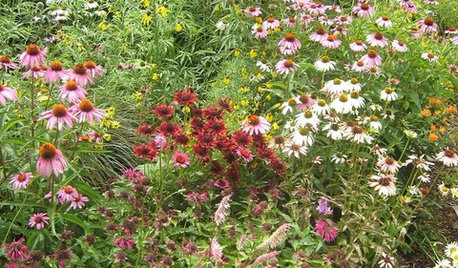
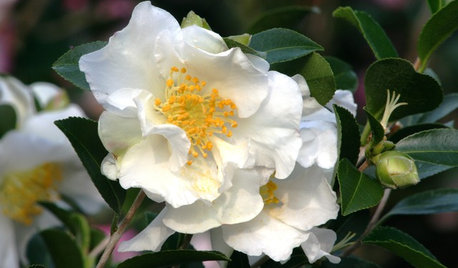



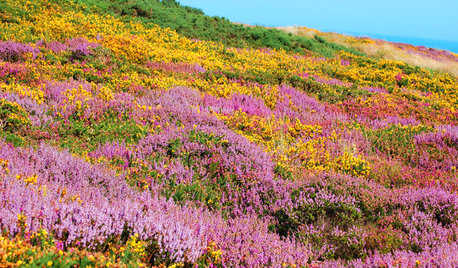
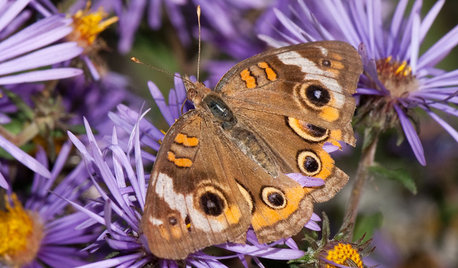
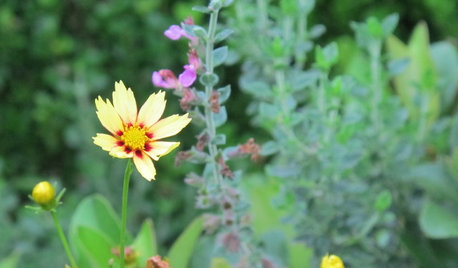







Laurel Zito